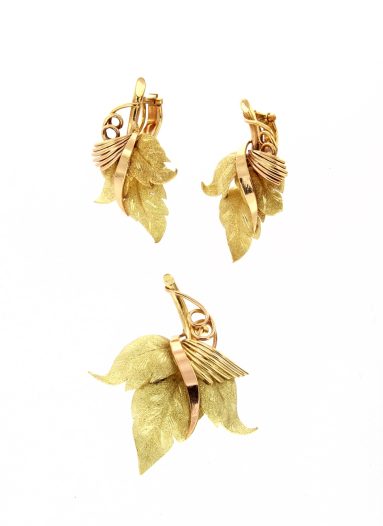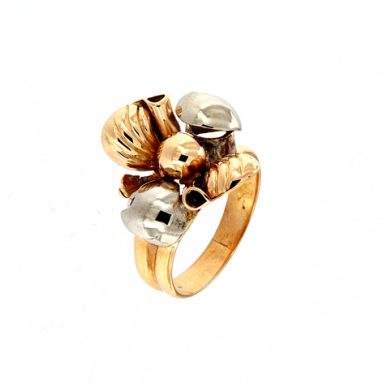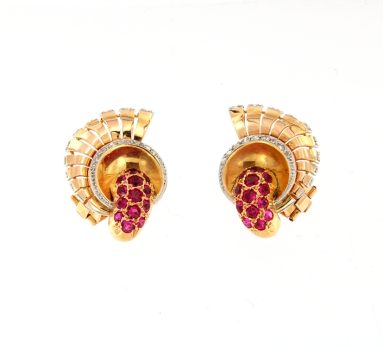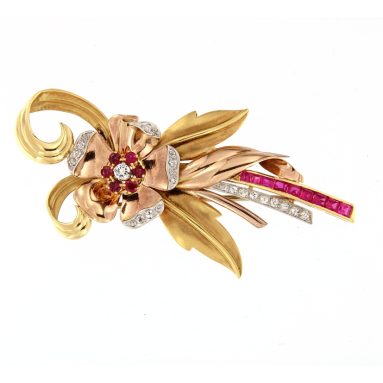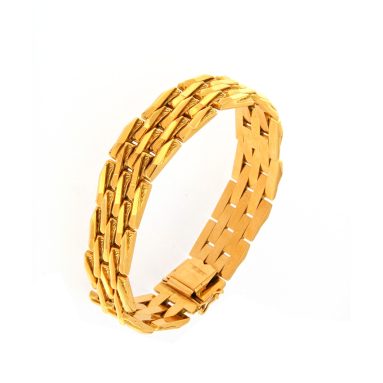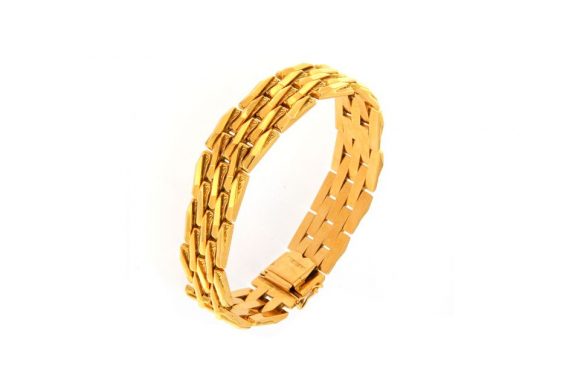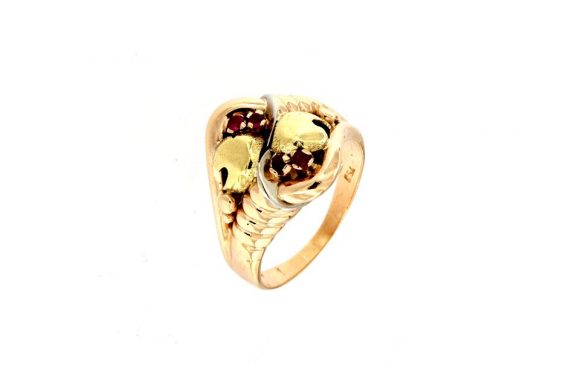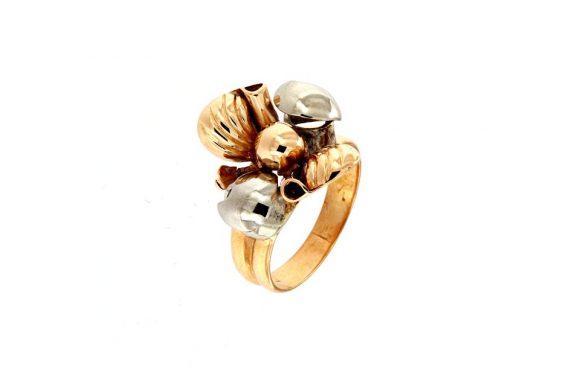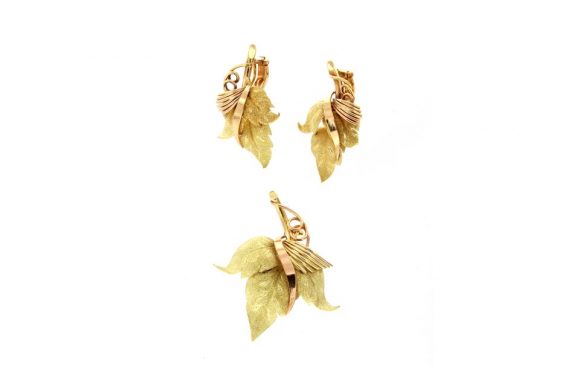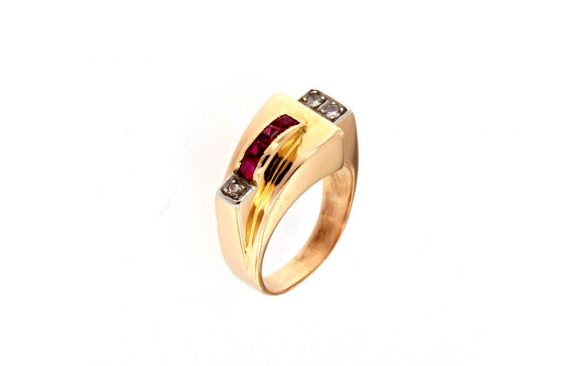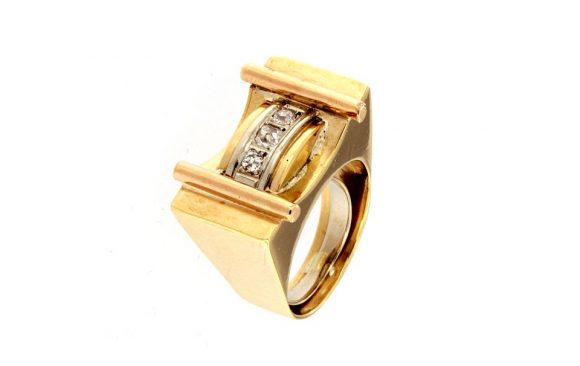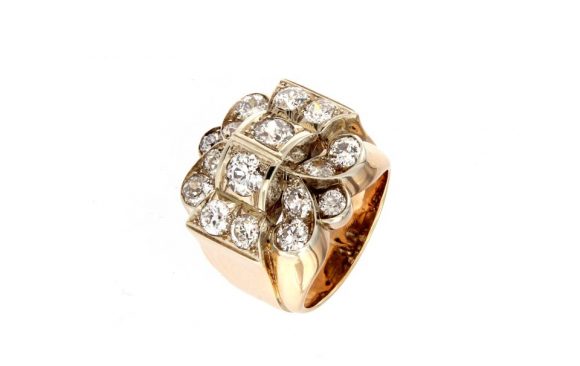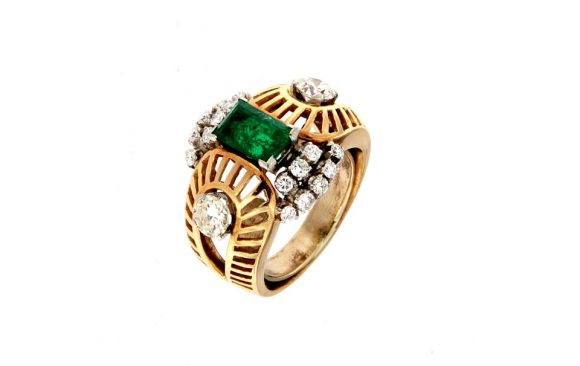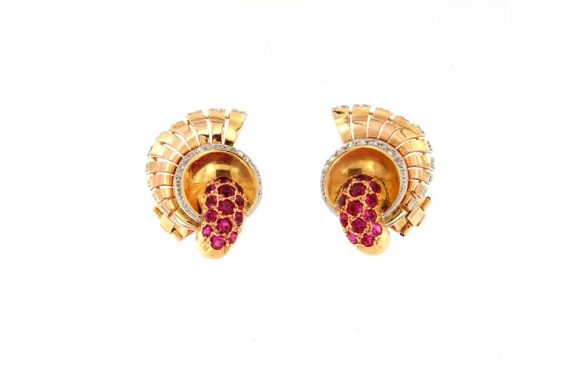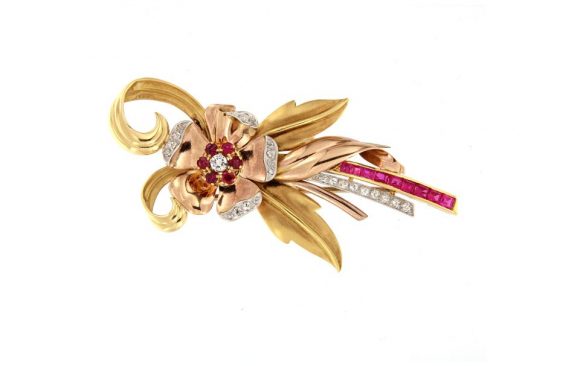The period between the 1930s and 1950s was a time of great movement and innovation in the world of jewelry, characterized by various trends and distinctive styles.
At the beginning of this decade there was a shift towards more feminine styles, and the flat angularity of Art Decò broadened out into more sculptural forms.
In the 1930s, following the era of Art Deco, there was a return to softer and more feminine forms. The geometric and angular elements of Art Deco were replaced by curved and organic lines. Preferred materials included yellow gold, which made a comeback after a period of dominance by platinum and white gold. Jewelry such as bracelets, necklaces, and earrings were designed with a sense of movement and dynamism, often in harmony with the fashion of the time.
The fashion of the time
One important bracelet, usually a strap and buckle design, was worn instead of several, and the versatile clip was increasingly popular.
At first abstract in design, from 1936 Cartier was producing clips representing turbanned blackmoors, Red Indian braves and a hand holding a flower. These figurative styles were immesely popular.
By 1937 yellow gold had returned to jewellery with success.
In That year Van Cleef and Arpels launched models of suites made in honey-comb style centred on tiny sparks of diamonds or rubies in star like settings, and thus ending the long dominance of platinum and white gold.
Designs – in harmony with the masculine-style clothes of the time – are massive and invested with a sense of movement.
Clips are made in the form of volutes, scrolls and loops, and bracelets are composed of links recalling tank caterpillar tracks and moving staircases. Narrow chokers were made of gold chain, enlivened with floreal brooches of coloured stones, often with ear-clips en suite.
Clips became very popular as versatile ornaments, allowing people to add elegance to their attire without the need for piercing fabrics. Bracelets became more massive and distinctive, with symmetrical sections resembling the traces left by caterpillars or escalators.
This style continued in fashion well into the 1950’s.

